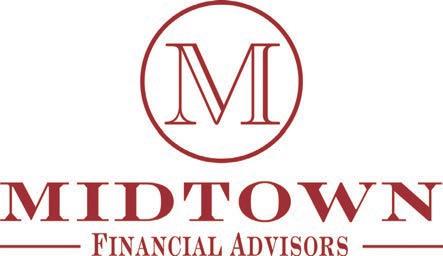
4 minute read
529 PLANS
from Homeschool Connections Magazine
by Heidi
A Smart Way To Save For Your Child’s Education
By Graham Jones
Advertisement
As avenues for education become more flexible, and education allows for more personalized learning approaches, each family must ask the question of what makes the most sense for their own kids. As we all know, homeschooling has emerged as a popular choice for many families alongside the more traditional public and private schools offered. For many of us though the question arises: how can we best fund education for our kids over time?
Enter 529 plans, the most popular of which is specifically a “College Savings Plan”. Offered at the state level in all 50 states, these 529 College Savings Plans were initially set up as a tax-advantaged way to save for college tuition and expenses. When families wanted a way to save for college expenses, they saw the rapid inflation of tuition costs year over year and recognized the need to begin saving early. Similar to our 401k’s and IRA’s, the idea of college savings was that a little bit of money saved today could grow into a sizeable amount over the course of 18 years, and help relieve the financial burden that comes when college years arrive.
How Do 529 Plans Work?
The idea is fairly straightforward. A 529 College Savings Plan allows the opportunity to set aside funds for college and have them grow tax free; provided that they are eventually used for higher education costs. By setting aside $50 or $100 each month, these small sums could make a big dent in college costs. Particularly for families who are considering the avenue of community college, or an instate public university, having a pot of tax-free money to pull from down the road has an obvious appeal. textbooks may all qualify for the preferable tax advantages from 529’s. and an avenue for funding of private primary and secondary education should the need arise for one of your children to attend a more traditional classroom setting. to have their own account. A 529 account can be set up and owned by a parent, grandparent, or family member, and has very generous annual contribution limits. Since contributions to the plan are considered “Gifts” in a taxable sense, annual contributions are capped at $17,000 per donor per recipient each year without getting into additional tax complications. Once the account is funded, the funds can then be invested in a variety of available Mutual Funds and investments offered by your particular plan. These can be as conservative or as aggressive as you like, and many plans even allow you to partner with your own financial advisor when managing the investments over the life of the account.
More recently, the use of these funds has been expanded as far as qualifying apprenticeship programs, trade schools, and private school tuition for K-12 private and parochial institutions.

What if Your Child Doesn’t Use the 529 Funds?
Finally, one question above all seems to come up when considering a 529 College Savings Plan. What if my child doesn’t use all of the funds we have set aside? While there are exceptions in place for scholarships received and generous usage of funds, there are four solutions that often make the most sense.

1Keep the account in case future educational plans change.
2Transfer the account to a beneficiary’s sibling who has greater need for the educational funds.
3Use remaining funds to pay off as much as $10,000 of beneficiary student loan debt.
4 Just this year, an exception has been made for individuals with excess funds. Provided the account has been open at least 15 years, beneficiaries can begin transferring up to $35,000 of unused 529 funds to their own personal ROTH IRA retirement accounts. Just as you want these funds to grow into a sizeable college fund, unused funds moved to a ROTH IRA can grow for decades into a tremendous tax-free retirement balance.
Ultimately, knowing your options and knowing your family’s unique situation can help you determine if a 529 College Savings Plan might be right for each of your children. Legislation around improving these accounts has been generous lately, and broadly bipartisan. If future changes come, look for ways that your family might benefit and consider speaking with an advisor, tax preparer, or CPA when it comes to the specific use of these accounts on various educational expenses. As the quote goes:
“The best time to plant a tree was 20 years ago. The second best time is now.”
Graham Jones offers securities through Securities America, Inc. (SAI), member of FINRA/SIPC. Investment advisory services offered through Securities America Advisors, Inc. (SAA). SAI and SAA are separately owned and other entities and/ or marketing names, products or services referenced here are independent of SAI and SAA. Investments in 529 plans involve risks to principal and may involve additional fees such as enrollment charges and annual maintenance fees. 529 plans offer no guarantees. Depending on your state of residence and the state of residence of the beneficiary, the plan may or may not be eligible for state tax benefits. Non-qualifying distribution earnings are taxable and subject to a 10% tax penalty.
Recent Expansions of 529 Benefits
In recent years, though, these plans have gained additional benefits. Due to the passage of legislation such as the 2017 TCJA, SECURE Act, and SECURE Act 2.0, these funds can now be used more liberally towards educational goals. For post-secondary expenses, required items such as laptops, room and board, printers, and
There are also exemptions for special needs equipment necessary for education accommodation as well.
We might each recognize that there is no “best” educational path to take, and it is a welcome addition for Congress to recognize the same. While 529 accounts are not yet tailored towards the needs of homeschool families, they still offer flexibility for college planning
Setting up a 529 Plan So with all this in mind, what might be the process for setting up a 529 College Savings Plan account? As mentioned before, each of the 50 states offers their own plan for state residents. In North Carolina, CFNC.org offers instructions for opening an NC529 account of your own. Due to state laws regarding 529 tax advantages, it may be worth comparing outside plans as well since there are few state tax advantages not offered to outside plans equally. Each state’s plan has their own nuances, and generally offers a different Investment Lineup depending on what best fits your families needs.
Each account must have a single individual as beneficiary, so multiple siblings would each want








